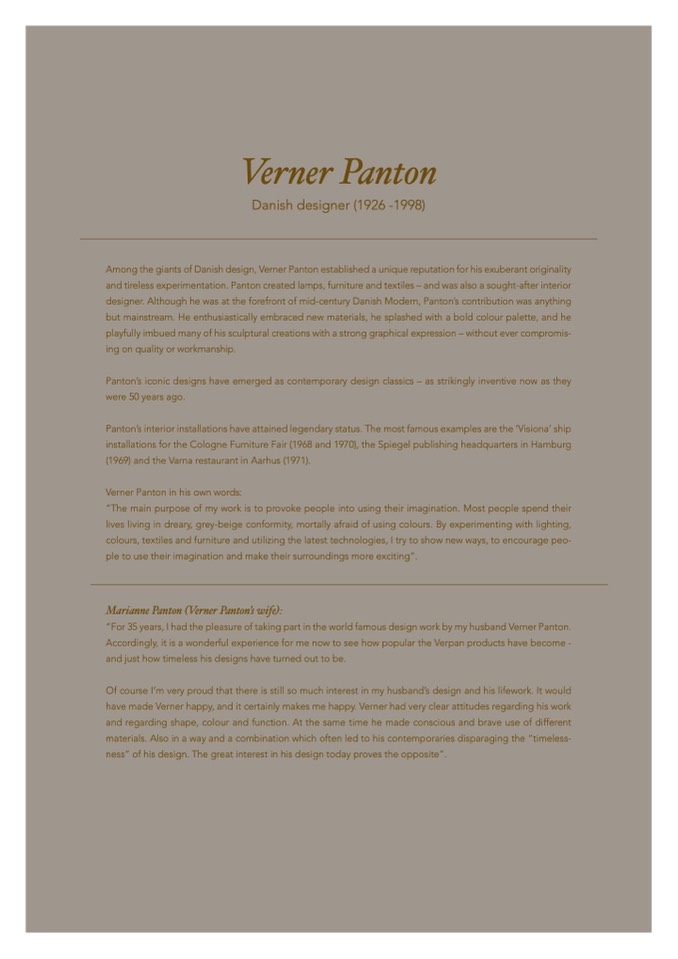
V
erner P
anton
Danish designer (1926 -1998)
Among the giants of Danish design, Verner Panton established a unique reputation for his exuberant originality
and tireless experimentation. Panton created lamps, furniture and textiles – and was also a sought-after interior
designer. Although he was at the forefront of mid-century Danish Modern, Panton’s contribution was anything
but mainstream. He enthusiastically embraced new materials, he splashed with a bold colour palette, and he
playfully imbued many of his sculptural creations with a strong graphical expression – without ever compromis-
ing on quality or workmanship.
Panton’s iconic designs have emerged as contemporary design classics – as strikingly inventive now as they
were 50 years ago.
Panton’s interior installations have attained legendary status. The most famous examples are the ‘Visiona’ ship
installations for the Cologne Furniture Fair (1968 and 1970), the Spiegel publishing headquarters in Hamburg
(1969) and the Varna restaurant in Aarhus (1971).
Verner Panton in his own words:
“The main purpose of my work is to provoke people into using their imagination. Most people spend their
lives living in dreary, grey-beige conformity, mortally afraid of using colours. By experimenting with lighting,
colours, textiles and furniture and utilizing the latest technologies, I try to show new ways, to encourage peo-
ple to use their imagination and make their surroundings more exciting”.
M
arianne P
anton (V
erner P
anton’s wife):
“For 35 years, I had the pleasure of taking part in the world famous design work by my husband Verner Panton.
Accordingly, it is a wonderful experience for me now to see how popular the Verpan products have become -
and just how timeless his designs have turned out to be.
Of course I’m very proud that there is still so much interest in my husband’s design and his lifework. It would
have made Verner happy, and it certainly makes me happy. Verner had very clear attitudes regarding his work
and regarding shape, colour and function. At the same time he made conscious and brave use of different
materials. Also in a way and a combination which often led to his contemporaries disparaging the “timeless-
ness” of his design. The great interest in his design today proves the opposite”.

